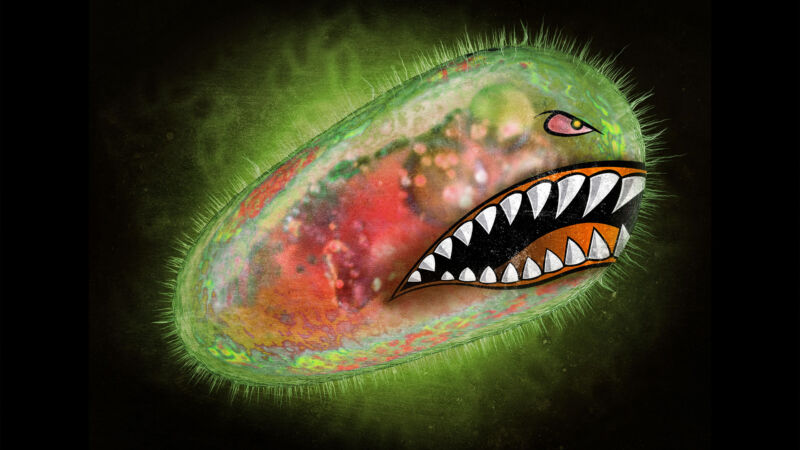Back in the day, taxonomists had to characterize organisms based basically on how they looked. Molecular phylogeny changed that; once scientists could isolate and amplify DNA, they started classifying organisms based on their genetic sequences. But that still usually required that the organisms be cultured (and thus culturable) in a lab.
High-throughput sequencing technology relieved that constraint. Now researchers can basically throw a drop of pus, pee, or pond water into a DNA sequencer and find a host of previously unidentified microbes.
Yet, rare sequences (and the organisms they come from) are still rare, and thus still hard to find. Microbial eukaryotic predators are single cells with complex internal structures, and they’re among the rarest taxa of all. To find some, researchers enriched seawater samples with bacterial prey to stimulate the growth of protists that ate them. The growth in protists in turn stimulated the growth of predators that fed on them. Only then did the researchers run their metagenomic analysis. They found 10 new predator strains that they say form a new supergroup. They named it Provara (for devouring voracious protists).
Provara were found in marine habitats the world over; in brackish and freshwater; in coral reefs; near the surface and in the deeps. They are “superficially unremarkable flagellates” that prey on other single-celled eukaryotes. The scientists further divided them into two clades. One of those, with two previously identified but hitherto un- or misclassified species, engulf their prey whole. The other group, including the new species, are much smaller and tend to nibble at their prey, biting off and ingesting small pieces of prey cells larger than they are.
In nomenclature worthy of Dr. Seuss, their discoverers named the two groups Nebulidia and Nibbleridia, respectively. They share parts of their body plan with distant relatives, indicating that their lineage is an ancient one.
Metagenomics has vastly expanded our ability to find new microbial species. But it does have limits—it still biases toward more abundant taxa and thus may not be adequately revealing microbial diversity. Rare taxa are often given orphan status simply because their rarity means we’re lucky to even stumble across one species, much less several.
But that may belie their place in their ecosystem. They may not be the isolated relics they appear to be on our phylogenetic trees—we just may not have discovered their lineage yet. And it may be a vast one. Revisiting culturing as a means to find new microbes, including eukaryotic predators, may yield a rounder, fuller picture of the early evolution of complex cells.
Nature, 2022. DOI: 10.1038/s41586-022-05511-5



3175x175(CURRENT).thumb.jpg.b05acc060982b36f5891ba728e6d953c.jpg)

Recommended Comments
There are no comments to display.
Join the conversation
You can post now and register later. If you have an account, sign in now to post with your account.
Note: Your post will require moderator approval before it will be visible.